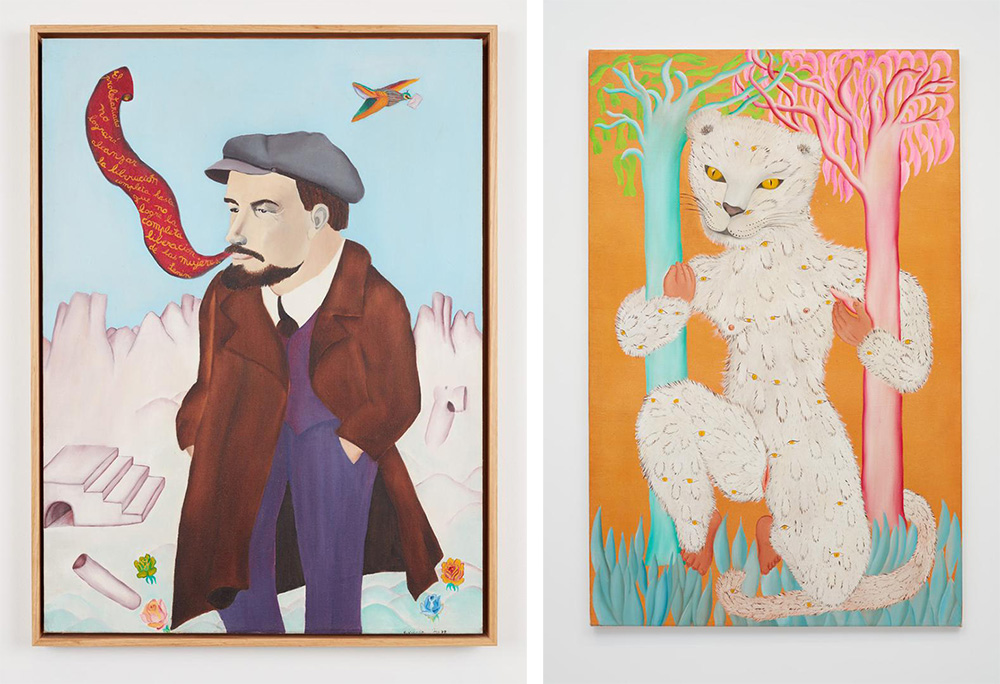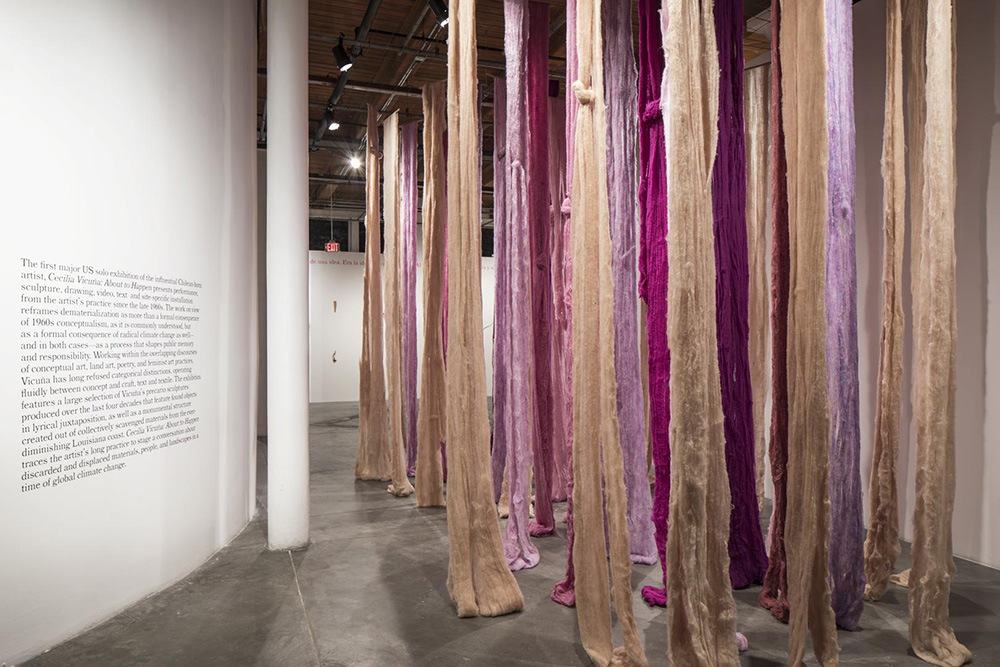ART CITIES:N.York-Cecilia Vicuña
 Cecilia Vicuña is a poet, visual artist, filmmaker and political activist, Her multi-dimensional works begin as a poem, image, object, or line, that evolve into a film, a song, a sculpture or a collective performance. Vicuña’s impermanent, participatory works are transformative acts that bridge the gap between art and life, the ancestral and the Avant-Garde. For over three decades, she has created work that evokes the rituals and themes of ancient, pre-Columbian cultures in the context of modern world on the brink of social and ecological collapse.
Cecilia Vicuña is a poet, visual artist, filmmaker and political activist, Her multi-dimensional works begin as a poem, image, object, or line, that evolve into a film, a song, a sculpture or a collective performance. Vicuña’s impermanent, participatory works are transformative acts that bridge the gap between art and life, the ancestral and the Avant-Garde. For over three decades, she has created work that evokes the rituals and themes of ancient, pre-Columbian cultures in the context of modern world on the brink of social and ecological collapse.
By Dimitris Lempesis
Photo: Lehmann Maupin Gallery Archive
While Cecilia Vicuña has lived in New York and exhibited widely in the United States and abroad for over three decades, “La India Contaminada” at Lehmann Maupin is the first comprehensive survey of her work in New York. The exhibition features Vicuña’s raw wool installation and sculpture known as “Quipu”, mixed-media sculptures referred to as “Lo Precario”, video, and painting, spanning 1969-2017. Vicuña refers to “Quipu” installations as “quipoems”, “A contraction of poem and quipu” an online dictionary defines quipu, rather reductively, as “a device consisting of a cord with knotted strings of various colors attached, used by the ancient Peruvians for recording events, keeping accounts, etc.” Historically, the quipu has been regarded as a simple bureaucratic device, but research demonstrates they represented a complex system of knowledge with symbolic and virtual dimensions of enormous existential and social value that connected communities. Vicuna’s use of dyed, raw and unprocessed wool, coiled in “Caracol Azul (Blue Snail)” (2017), or suspended as in “Quipu Viscera (Visceral Quipu)” (2017), creates a visual meditation on the liminal spaces between life and death, humans and nature, the past and the present, represented in the diffuse fibrous strands of wool. In the mid-1960s Cecilia Vicuña began making what she called “Precarios”, small assemblages of found material such as found scraps of cloth, shards of plastic, a feather, a leaf, a butterfly or a pencil. Some “precarious” were meant to be portable and comparatively permanent, while others were situated in natural or urban settings without consideration for their long-term survival. Vicuña also has garnered her reputation as an activist, in 1975, Vicuña was the co-founder (with John Dugger, David Medalla and Guy Brett) of “Artists for Democracy” in London, an artists’ organization formed in London to oppose dictatorships in the Third World. Nowhere is this more visually evident than in her paintings, primarily created during the 1970s, that narrate her own history, interwoven with that of Chile and Salvator Allende. These use a painting technique Vicuña learned in the late 1960s from the Surrealist artist Leonora Carrington; and were initially inspired by the naive and subtly subversive images made by 16th Century indigenous artists in Latin America after the Spanish conquest when they were forced to paint angels and saints for the Catholic Church. In Vicuña’s paintings, religious icons are replaced by personal, political and literary figures.. While several are explicitly political in content, such as her “Lenin” (1972), Vicuña’s most radical act, perhaps, is to embody and depict the undoing of centuries of indoctrination and dogma. Vicuña similarly adopts this method by using this colonial style of image making, but incorporating revolutionary iconography. Paintings like “Leoparda de Ojitos” (1976) offer evidence of this “contaminated” mode of thinking.
Info: Lehmann Maupin Gallery, 536 West 22nd Street, New York, Duration: 19/5-6/7/18, Days & Hours: Tue-Sat 10:00-18:00, www.lehmannmaupin.com


